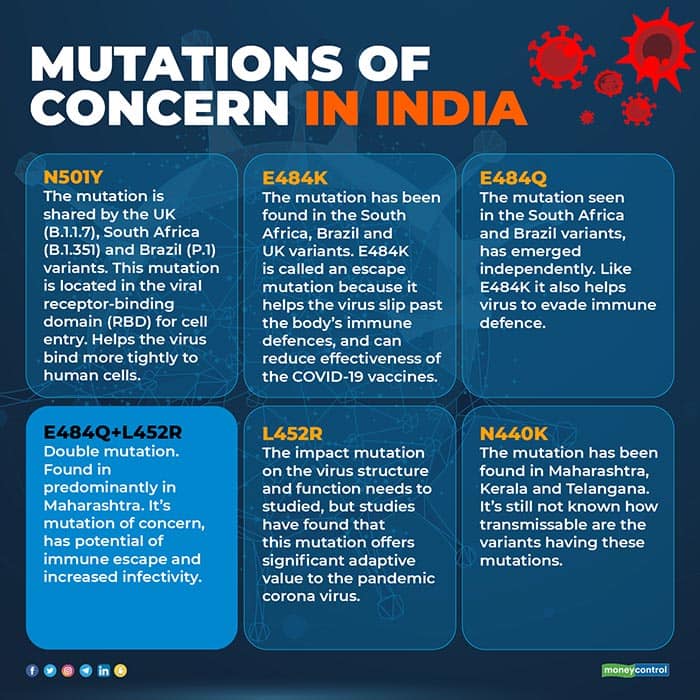The Indian SARS-CoV-2 Consortium on Genomics (INSACOG), a grouping of 10 national laboratories, on March 24, announced that it has detected 771 variants of concerns (VOCs) in 10,787 positive samples it had sequenced.
INSACOG carried out the genome sequencing and analysis on samples from incoming international travellers, contacts of those tested positive for VOC, and community samples from most of the states and Union Territories.
Out of the 771 VOCs, 736 samples were positive for viruses of the UK (B.1.1.7) lineage, and 34 were found positive for viruses of the South African (B.1.351) lineage and one was found positive for viruses of the Brazilian (P.1.) lineage.
The samples with these VOCs have been identified in 18 states of the country.
The analysis of samples from Maharashtra revealed that compared to December 2020, there has been an increase in the fraction of samples with a double mutation called E484Q-L452R.

How many cases of the mutation?
The mutation is suspected to be a local one. This mutation has been found in about 15-20 percent samples from Maharashtra and do not match any previously catalogued VOCs. According to government data, about 223 cases positive for this double mutation have been sequenced. Around 206 are from Maharashtra, more specifically, from Nagpur. The double mutation was also found in Punjab (2), Delhi (9), Gujarat (3), and one each in Ladakh, Jammu and Odisha.
What is this double mutation?
It is natural for RNA viruses to mutate. The spike protein is the most important protein. It is responsible for the attachment of the virus to the cell. Within the spike protein, there is one stretch which actually engages with the attachment. Mutations in that region, we call it as receptor binding domain (RBD), depending on the type of mutation - sometimes gives advantage to the virus. It improves the fitness of the virus spike protein to the cell, allowing the virus to get in more easily into the cells and multiply faster.
The VOC found in Maharashtra has two mutations - E484Q and L452R. Both are in the RBD region.
What is the impact of this particular variant?
E484Q mutation is seen in the South African and Brazilian variants, and has emerged independently and is known to help the virus evade immune defence.The impact of L452R - mutation on the virus structure and the function needs to be studied deeper, but studies have found that this mutation offers significant adaptive value to the SARS-CoV-2 virus. In theory, this double mutation has the potential of immune escape and increased infectivity.
But experts such as Dr V Ravi, retired professor of neurobiology at NIMHANS and nodal officer for Genomic Confirmation of SARS-CoV-2, Karnataka, says that we need more studies to assess the impact of this variant on the transmission.
“First, we need to isolate the mutant virus. The National Institute of Virology (NIV) should be on it and then show it on cell culture that it is more infectious. Second, we need to trace all people who are positive for this mutant, versus those who are negative for the mutant. See if the spread is more. Unless we do this, we will not be able to tell whether this is a VoC or not," Dr Ravi said.
How concerning is this double mutation?Experts say that the VoC are highly infectious, but they are not associated with more severe form of COVID-19.
“In terms of severity illness, all mutants are not very different,” Dr Ravi said.
Dr Ravi adds that people should wear masks, maintain physical distance and hand hygiene. He advises people to take COVID-19 vaccine and governments to keep testing, tracking and isolating positive cases."All the vaccines give protection against death and severe COVID-19 disease," Dr Ravi said.